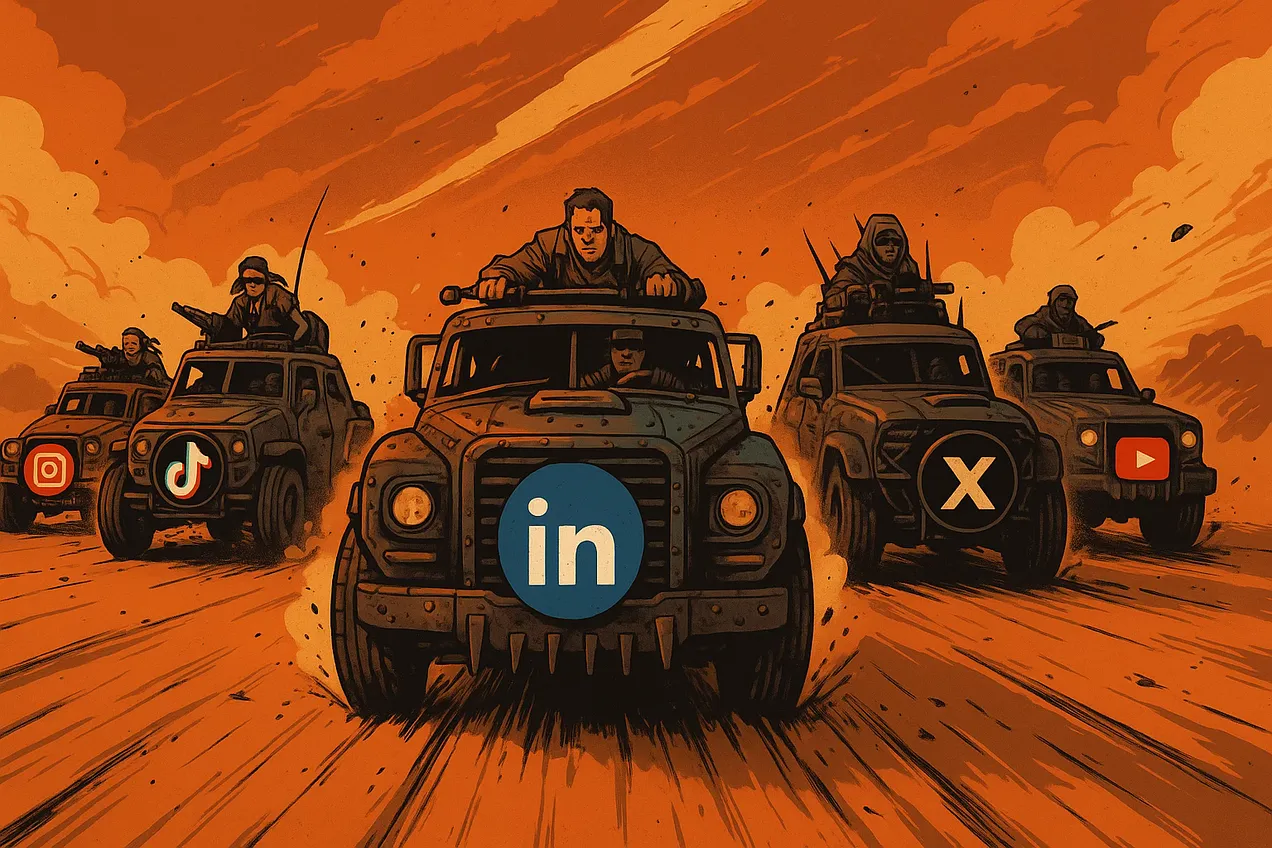The Platform Wars: Beauty on LinkedIn and the Battle for Creator Loyalty
Unilever, TikTok, and Instagram just revealed where the creator economy is headed next
I missed three stories this weekend — which bothers me more than it should.
First: Unilever ran a beauty influencer campaign on LinkedIn. Yes — LinkedIn.
Second: Meta started offering TikTok creators up to $5,000 in bonuses to switch to Facebook and Instagram, with content requirements spread over 90 days.
Third: TikTok rolled out expanded subscription features to non-live creators in select regions, while simultaneously expanding its Effect Creator Rewards program to 33 new markets.
Individually, each story feels like standard platform competition. Together, they reveal something bigger: we’re watching the boundaries between professional, personal, and creative platforms collapse in real time.
The LinkedIn Surprise
The Unilever campaign wasn’t some lazy content repurpose. K18, their biotech haircare line, partnered with Creator Authority to tap creators like Jade Walters and Elvi Caperonis for giveaways and mentorships. But here’s what caught my attention: they positioned beauty as professional confidence, not personal vanity.
It clicks — because it’s true.
LinkedIn stopped being just résumés and networking years ago. Now it’s professional storytelling — including what we buy and why. Beauty fits because grooming and self-care directly impact how we show up at work.
D2C skincare brands in India have been quietly testing product launches there for months. The audience skews older, wealthier, more decision-makers than typical social feeds.
The Desperation Economy
But LinkedIn’s beauty moment isn’t happening in isolation. It’s part of a broader platform war where traditional categories are being weaponized.
Meta’s $5,000 creator bonuses require 20 Facebook Reels and 10 Instagram posts over 90 days — native content only, spread across at least 10 separate dates. Meanwhile, Instagram launched a “Referrals” program paying creators up to $20,000 for bringing new users to the platform.
TikTok’s response? Expand creator rewards to 33 new markets with payouts up to $14,000 per effect and $50,000 per month, while rolling out subscription features that let creators monetize their most engaged followers directly.
This isn’t just competition — it’s platform desperation. Each company knows that losing creators means losing the content that drives engagement, which drives ad revenue, which drives everything.
Professional Identity as Product
What’s fascinating is how this competition is reshaping what counts as “professional” content. LinkedIn’s beauty space feels fresh because it’s uncrowded. Campaigns feel authentic instead of algorithmic. The engagement comes from relevance, not virality.
What’s working on LinkedIn:
– Giveaways tied to career confidence
– Product stories with business angles
– Micro-influencers with earned credibility
– Gender-inclusive messaging for professional contexts
It’s better for trust-building than scale — but premium brands care more about the former anyway.
The Bigger Shift
We’ve been trained to separate professional platforms from personal ones. But people don’t compartmentalize their identities that cleanly. The platform wars are forcing this convergence.
Think about it: if TikTok is paying creators $50,000 monthly while Instagram offers $20,000 referral bonuses, creators need to diversify their platform presence to survive. LinkedIn becomes attractive not just for its professional audience, but as a hedge against algorithm changes and platform volatility.
What This Means for Brands
LinkedIn is selling credibility. TikTok is selling creativity. Instagram is selling distribution. But all three are paying creators — because none of them can afford to lose attention.
The platforms are fragmenting creator attention across multiple spaces. Smart brands will follow their audiences, not their assumptions about where different content “belongs.”
If you’re building any brand today, you can’t afford to ignore platform convergence. The power users aren’t just networking on LinkedIn or dancing on TikTok — they’re curating identity across every platform that pays them, and engaging with stories that feel real in each context.
Unilever figured this out. K18 executed it well. The beauty brands testing LinkedIn launches in India saw it coming.
The New Rules
Platform loyalty is dead. Creator loyalty follows the money. And professional identity is just another product category waiting to be monetized.
The companies that adapt to this reality — where beauty belongs on LinkedIn and business content thrives on TikTok — will capture attention while their competitors argue about what belongs where.
If K18 is the test case, it won’t be the last.
*Want more insights on platform convergence and creator economy shifts? Follow distllr.com for analysis that cuts through the noise.*
